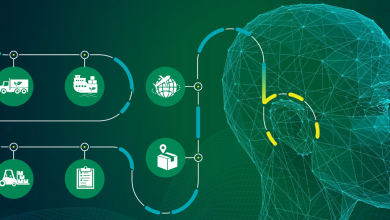
We’ve all had to become well acquainted with crisis management this year. It’s been a rush to find ways to keep our businesses successful in the face of fewer customers, reduced workforces and shrinking revenues. It’s prompted some businesses to consider automation to help with everything from the business infrastructure to improving customer experience in a largely digital-only world.
Automation can help your business through this crisis and prepare it for the future
What challenges is your business facing?
Automation can support your business in a number of areas – such as managing finances. Has your cashflow suffered due to the pandemic? A key area to focus on here is your accounts receivable. Many businesses still use manual processes to collect and chase invoices. Automation can save you time and money by making the process much more efficient.
It’s unlikely that a global pandemic factored into your business continuity plan. So maybe take this time to review it. Many of these plans are designed to tackle localised disasters, so the plan is usually to ensure human-driven processes can continue elsewhere. However, you can use automated systems to support your business – allowing it to continue anywhere with minimal disruption.
Many businesses have seen disruption in their income streams. As warehouses and offices have emptied, businesses have seen crucial workflows interrupted or halted completely. By automating various parts of this process, businesses can maintain productivity.
But you might have also noticed that certain tasks don’t need to be done after all, or can be given a lower priority. There’s tremendous potential for cost-savings here.
Finally, have you managed to maintain a great customer experience? Customers have long memories when it comes to a business’ response in a crisis. Perhaps they were willing to cut you some slack at the start of the pandemic, but at almost a year in, people expect websites and contact centres to be working efficiently. Again, automation can work in the background making improvements for employees and customers alike.
What risks does your business face, and how can automation help?
It’s also the time to assess whether your business can use automation to prepare for the future.
1. Re-evaluate your business-critical processes
What activities have you stopped, and which have you found are more business-critical than you assumed? Use this knowledge to prioritise what processes you automate and automate them now. For example, you can use a bot to follow-up with late payments, have the bot check the responses and pass them on to human specialists for follow-up if needed. Getting started on automation will give your business an early advantage over competitors.
2. Look beyond the cost-savings of automation
Automation can also help to mitigate a risk that’s often seen more like a run-of-the-mill issue – human error. Introducing automation produces a cost-efficiency in itself, but it also removes the risk of human error and frees up significant time for other employees who would usually have to fix the issues. Businesses can see significant increases in capacity by automating more processes.
3. Resolve customer experience pain points
Businesses that have struggled with providing a seamless service to customers during the pandemic – especially retailers faced with high-demand events like next-gen console launches and Black Friday – need to consider automation. Simple bots and conversational AI can drastically reduce customer demand in service centres. RPA tools can automate tasks like mortgage payment holiday requests. There are many areas where automation and AI can remove the reputational risk of poor customer experience.
Use these lessons to re-visit your business continuity planning
By building automation into their business continuity plans, businesses ensure that they can pivot rapidly when the next crisis hits. Business continuity plans need to include many strategies – some of which have only been revealed by the pandemic. For example, rather than scrambling to enable your office-based employees to work from home securely, you can use automation to create a digital workforce that’s adept at working from home or the office and has the technology to support their work.
Businesses that are new to automation, as well as those who are already using automation at scale, need to take the time to review what automation is doing for them now and what it can help them with in the future. We all realise that the economic impact of the pandemic will be long-lasting, and businesses must find a way to survive (and, hopefully, thrive) in a changing world.
Businesses that implement intelligent automation now put themselves at a massive advantage against their more hesitant competitors. It will help them relieve the pressure on their customer service teams, create extra capacity for their employees and reduce the risk to the business in the short-term. Not only will automation help businesses recover from this crisis, but it will ensure that the business is more resilient and ready for the next.




